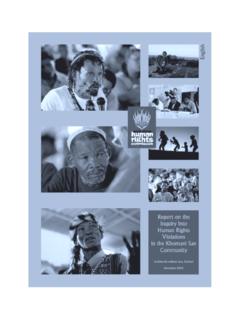Transcription of Joint Health and Wellbeing Strategy City of London ...
1 Joint Health and Wellbeing Strategy City of London Corporation 2017/18-2020/21. Page 1. Contents 1 Foreword .. 4. 2 Introduction .. 4. 3 Background .. 4. The City .. 4. City residents .. 5. City 6. Rough sleepers .. 6. 4 How are we going to achieve our vision? .. 6. Our vision .. 6. How this Strategy will deliver our vision .. 6. The role of our Health and Wellbeing Board .. 7. 5 Strategic context .. 7. National context .. 7. Local context .. 7. Sustainability and Transformation 8. Locality Plans .. 8. Devolution pilot and integrated 8. 6 Progress since the last Strategy .. 9. 7 Developing this Strategy .. 9. 8 Priorities .. 10. Guiding Principles .. 10. Priority 1: Good mental Health for all .. 11. Why this is a priority: .. 11. What we will achieve: .. 11. What we will do: .. 12. Priority 2: A healthy urban environment .. 12. Why this is a priority: .. 12. What we will achieve: .. 13. What we will do: .. 14.
2 Priority 3: Effective Health and social care integration .. 14. Why this is a priority: .. 14. What we will achieve: .. 14. What we will do: .. 14. Priority 4: Children have the best start in life .. 15. Why this is a priority: .. 15. Page 2. What we will achieve: .. 15. What we will do: .. 16. Priority 5: Promoting healthy behaviours .. 16. Why this is a priority: .. 16. What we will achieve: .. 17. What we will do: .. 18. 9 Delivering the Strategy .. 18. The Role of the Health and Wellbeing 19. Page 3. 1 Foreword To be completed for final draft 2 Introduction The Health and Social Care Act 2012 places Health and Wellbeing boards at the heart of planning to transform Health and social care and achieve better standards of Health and Wellbeing for the population. Health and Wellbeing boards have a number of core responsibilities. These include assessing the Health and Wellbeing needs of the local population through the Joint Strategic Needs Assessment (JSNA) and preparing a Joint Health and Wellbeing Strategy .
3 The aim of a Joint Health and Wellbeing Strategy is to jointly agree what the most important issues are for the local community based on evidence in JSNAs, what can be done to address them, and what outcomes are intended to be achieved (Department of Health , 2012). The City of London contains several populations in one place (residents, workers, rough sleepers and other people who visit the City everyday), with different needs and Health issues. This Strategy therefore considers three distinct populations with different needs and mental Health issues: residents, City workers and rough sleepers. The City of London 's Health and Wellbeing Board1 exists to improve the Health and Wellbeing of these communities within the City of London and to reduce Health inequalities across the Square Mile. It brings together leaders across the Health and care system to provide collective leadership on a range of complex and cross-cutting challenges which impact on the Health and Wellbeing of local people.
4 Health and Wellbeing outcomes and inequalities are driven by a range of factors, some of which individuals have little control over. Others are the result of behaviours which in turn are heavily influenced by people's circumstances and environment, such as income, employment and living conditions. This Strategy will address those factors which affect the Health of the population within the City of London . 3 Background The City The City of London has the highest daytime population of any local authority area in the UK, with hundreds of thousands of workers, residents, students and visitors packed into just over a square mile of densely developed space. The City of London also has the sixth highest number of rough sleepers in London . 1. Details of the Health and Wellbeing Board meetings, agendas and membership can be found here: Page 4. The City Corporation is responsible for local government and policing within the Square Mile.
5 It also has a role beyond the Square Mile, as a port Health authority, a sponsor of schools, and the manager of many housing estates and green spaces across London . The City and Hackney Joint Strategic Needs Assessment pulls together data from a range of sources. It is supplemented by a City specific document which describes the Health needs of the different communities in the City, and makes a number of key recommendations for service provision based on levels of need. These findings form the evidence base for this Strategy and enable us to understand the particular Health problems faced by people in the Square Mile. The City borders seven London boroughs and residents often have to access services that are delivered outside the Square Mile. The catchment area of the City's only GP practice does not cover the whole City, so residents in the east access primary care services from Tower Hamlets GPs. This means we must also work closely with Tower Hamlets CCG to ensure residents' needs are met.
6 Public Health in the City of London has a strong relationship with the London Borough of Hackney. City and Hackney share a Director of Public Health and a Clinical Commissioning Group. A number of public Health services are also commissioned in partnership with the London Borough of Hackney. While most public Health services are focussed on the resident population some public Health services are also commissioned for City workers. In surveys, the City scores highly as a place to live and work and it has excellent transport links and cultural services. The City is an urban area, and suffers from poor air quality. Particulate matter and nitrogen dioxide levels are both very high, and there are a high number of noise complaints. There are numerous open spaces in the City but they tend to be small in size. City residents The latest population estimates from the Office of National Statistics places the City's resident population at 8,760 a figure which is projected to increase.
7 Those aged 65 and over are projected to contribute the most to this growth, with their numbers increasing rapidly in the next decade. This is likely to create increased demand for Health and social care services in the future. In contrast, there are relatively few children in the City. The City's children mainly live in dense pockets of housing with some areas experiencing high levels of deprivation. The City of London has a diverse range of ethnicities and religious faiths. There has been improvement in the City's deprivation ranking in recent years, however significant gaps remain between the areas of Portsoken (40% most deprived) and Barbican (10% least deprived). Page 5. City workers Around 415,000 people work in the Square Mile, and this is expected to grow rapidly over the next decade. City workers are mainly aged between 20 and 50, with a higher proportion of men. City workers tend to be healthier than the general population because they are younger, although lifestyle factors such as smoking, alcohol consumption, levels of physical activity and diet have an impact.
8 Rough sleepers In 2015-16 the City had the sixth highest number of rough sleepers among London local authorities. On average 20-25 people sleep on the streets of the City of London every night. The vast majority are male and include those new to the streets as well as longer term rough sleepers. Those that find themselves homeless on the streets are especially vulnerable to crime, drugs and alcohol, and at high risk of physical and mental illness and premature death. Many people come to the streets with complex issues, some have limited entitlement to services and some are resistant to support and treatment. Homelessness can be both a cause and a consequence of major problems for an individual's Health , both physical and mental. 4 How are we going to achieve our vision? Our vision This Strategy is underpinned by the following vision: Working in partnership to achieve longer, happier, healthier lives in the City of London How this Strategy will deliver our vision The key role of this Strategy will be to inform commissioning and service planning to ensure the City's priorities are met within wider partnership approaches and service commissioning from 2017/18.
9 We expect that both commissioners and service providers will seek to implement the Strategy in the specification, planning and delivery of services. We will also expect continued integration wherever this can deliver better Health outcomes and a better experience for patients and service users. By implementing our Strategy we want to reduce the differences in Health across the Square Mile, for those who live and work here. We will use evidence of effectiveness to inform what we do and we will get the best value from our resources. We will invest in prevention and early intervention. We also want more people to have a positive experience of care and support. This means that access to services should be fair and transparent, provision of services should be timely and the location should be appropriate. Wherever possible, people should be supported in the community, close to their homes, friends and families.
10 Care and support should give people the greatest possible level of choice and control over their lives and should be tailored to meet their individual needs. Page 6. The role of our Health and Wellbeing Board The Health and Wellbeing Board's role will be to champion the vision and priorities of the Strategy and to hold delivery partners to account. This will require the Board to provide robust challenge to work being delivered across the system and show action-focused leadership if barriers exist and are preventing progress. This may include Board members working to actively drive change in their own organisations, or looking together at how resources are used across different agencies and partners for maximum impact. Monitoring progress, and seeing how the Strategy is leading to real change for residents, workers and rough sleepers, will enable the Board to make the right interventions at the right time. The detail of this action is given below in section 9.
















